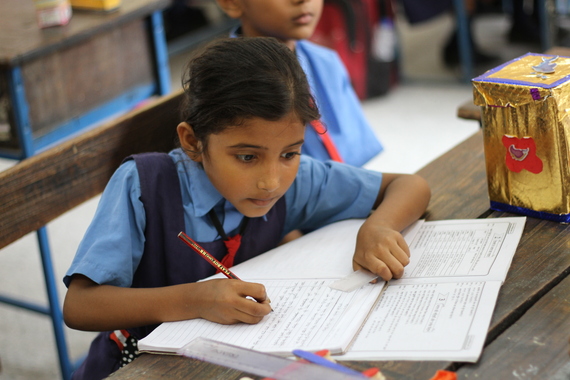By Alisha Miranda, Managing Director at I.G. Advisors.
What do Sarah Brown, Malala Yousafzai and Beyonce have in common? Besides being pretty incredible women, they were three of the many powerful people clamoring for an increased focus on girls' education during the United Nations General Assembly (UNGA) week of activities, held in New York at the end of September. Besides the usual meeting of powerful minds, this year's UNGA was particularly exciting as it saw the ratification of the new Global Goals for Sustainable Development. Goals 4 and 5 focus on quality education and gender equality, respectively.
It does seem like girls' education is having a moment. The powerful voices from New York were joined by millions around the world -- including many companies. From Dallas to Delhi, private sector actors are standing up to take action in this space. But perhaps many may be surprised to find that this isn't really a new thing -- quite a few very large, multinational companies have been investing in this space for years. I can make this statement with some authority, having worked with the Girls' Education Taskforce of GBC-Education to produce the report The Journey of a Girl, which looks at the barriers girls' face to education, and where companies are focusing their investments.
By all accounts, corporate investment in girls' education has increased dramatically in the past decade. Imagine a line graph, charting the evolution of the private sector involvement in girls' education. The starting point would be around 2004, when the Nike Foundation was founded. It was the beginning of a steadily growing trend that has today become a groundswell of support, engagement and investment.
In that same year, other mainstream economists, not traditionally known for their engagement with the girls' education or empowerment spaces, began to stand up and take notice as well: in a report from the Council of Foreign Relations, just two years after they launched their Center for Universal Education, head of the Center and economist Gene Sperling said "There may be no better investment for the health and development of poor countries around the world than investments to educate girls."
From 2004 to 2008, the graph takes a gentle slope upward and then in 2008, makes a sharp increase. This is when the Nike Foundation's Girl Effect video was released. Originally intended for policymakers, it reached public consciousness on a large scale. When Half the Sky, by Nicholas Kristof and Sheryl WuDunn was released in the following year, it was clear -- the public awareness of the plight and potential of adolescent girls had reached a watershed moment.
With the public steadily engaged and clamoring for more, the private sector joined the conversation in a much more robust way. The path that UN Women and the UN Global Compact's Women's Empowerment Principles takes mirrors this crescendo clearly. In 2010, 39 CEOs from around the world had signed up to the principles. The number in 2015 stands at over 1,000.
Education has long been a focus of the corporate world, first through philanthropy and later, CSR and core business investments. An increased public focus on girls and women allowed some to hone in on girls' education as a real opportunity for change; particularly between 2010 and 2015 when many corporate investments into girls' education were first made.
Today, this chart of these corporate investments in girls' education would be sloping steadily upward. The key today is to ensure that 2015 is not the pinnacle of the graph, but instead is the moment where corporate investment in girls' education has truly hit its stride.
This report was commissioned by the Girls' Education Taskforce of the Global Business Coalition for Education (GBC-Ed) to provide a map of existing business initiatives in girls' education overlaid on the educational life cycle of a girl (from birth through work). By understanding how businesses invest in removing barriers to education over a girl's lifecycle, this map gives a clear picture of where initiatives are concentrated, and crucially, where there are gaps.
This moment in time is crucial for companies wishing to invest in girls' education. The Global Goals provide a clean slate for many corporates: an opportunity to review, refocus and renew investments in girls education in a strategic and impact-fueled way. It is hoped that this review will spur collaborations, a focus on barriers that are underinvested in, and a holistic approach to investing in girls' education across her life. This complex challenge requires collective investment, and the private sector is well-placed to come together with solutions that will transform the future of girls, and moreover, the world around them.
--
Alisha F. Miranda is the Managing Director at I.G. Advisors. Throughout her career she has focused on helping innovative programmes build scale and become sustainable. Previously, Alisha served as the Director of TrustLaw, the Thomson Reuters Foundation's global pro bono service for NGOs and social enterprises. She has also managed global community investment at Standard Chartered Bank and is a trustee of Coin Street Community Builders, Women Win, and an advisor to Lend-A-Hand India.
11 October, 2015, is International Day of the Girl Child. This year, the Global Business Coalition for Education and Theirworld have released a new report, The Journey of a Girl: Opportunities for Business Investment in Girls' Education. The report maps out barriers to education along the journey of a girl and identifies where and when businesses should invest to maximize the greatest social return.


